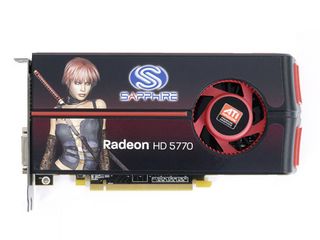DirectX 11 graphics cards reviewed and rated
Mid-range DX11 graphics power from £100 to £200

AMD is on top of the graphics world right now. Its 48xx series has redefined gaming on a budget, while the brand new ATI Radeon HD 5870 is shredding all comers in the benchmarks stakes.
Is AMD unbeatable? Not quite. The Radeon HD 5870 may be an incredible force of silicon-backed nature, but it costs considerably more than AMD's previous offerings.
This is surprising given that AMD's recent successes have all been down to its tight focus on value.
Worry not, though. it's eager to populate those gaps before Nvidia can respond, and so has released three more-affordable spins off the same basic core: the 5850, 5770 and 5750.
But are these new chips any good? Time to find out...
All three new GPUs use the same 40nm production process and boast the same DX11-supporting engine of the all-singing all-dancing 5870.
The difference is these have all undergone differing levels of silicon pruning in order to hit certain price points.
Get daily insight, inspiration and deals in your inbox
Get the hottest deals available in your inbox plus news, reviews, opinion, analysis and more from the TechRadar team.
It's not immediately obvious why AMD has picked these price points, but just to clarify: the top of the range 5870 is available for £300, the 5850 rolls in at the £200 mark, while the 5770 and 5750 are available for £130 and £100 respectively.
Annoyingly the 5750 should be a $100 offering, but this hasn't translated well as it crossed the channel.
All three cards need to be considered in the context of DirectX 11 and the potential it holds. It's difficult to say for certain at this point how big a step forward DX11 will be for gaming, but Microsoft has at least tried to make it as easy as possible for developers to code for the new API.
Even so, at the time of testing there are no compelling games that really show what DirectX 11 is capable of, or really push this hardware at all. Indeed while there are a few releases due any day now, it won't be until mid next year that we'll really see how support is shaping up.
This means that for now we have to see how these cards play out in the DirectX 10 world.
Current page: Affordable DX11 cards: Overview
Next Page Affordable DX11 cards: ATI Radeon HD 5850